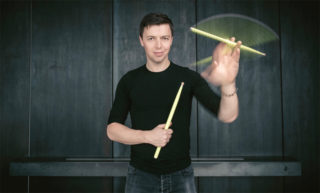Expressed in words or music?
Basel Sinfonieorchester
22 and 23 June 2022
Steven Isserlis, Violoncello
Jukka-Pekka Saraste, Conductor
William Walton - Concerto for Violoncello and Orchestra
Gustav Mahler - Symphony No.1 in D major, 'Titan'
It is hard to imagine, but until the 1960s Mahler was perceived as a tragic figure without originality, unable to achieve perfection. His symphonies were considered far from timeless. The reappreciation of his music was driven by the centenary of his birth and the invention of the LP, which facilitated the recording of entire symphonies. Subsequently several musicologists started to write favorably of his work. With the wisdom of hindsight, we know Mahler formed a crucial bridge between Romanticism and Modernism.
In his days Mahler was mostly seen as a conductor – his merits as a composer were not always acknowledged. Whether it was at its world premiere in Budapest (1889), or at later first performances in Hamburg (1893), Berlin (1896), Vienna (1900) or New York (1909), his first symphony was met with criticism. Amsterdam, where he found an avid supporter in Willem Mengelberg, the legendary conductor of the Concertgebouw Orchestra, may well have been the only exception.
Schoenberg, for whom Mahler’s music was an acquired taste, supposedly said that Mahler’s entire oeuvre is present in his first symphony. And indeed, Mahler might have agreed. He said his first two symphonies “contain the inner aspect of my whole life”, and “I have written into them everything that I have experienced and endured. To understand these works properly would be to see my life transparently revealed in them.”
Life clearly is an important source of creativity for Mahler. However, “the need to express myself musically begins only on the plane of obscure feelings, at the gate that opens into the other world.” Hence the question: Is there a personal story underlying his first symphony or does it unfold into another world perhaps even beyond Mahler’s reach?
At its world premiere the piece was called a ‘symphonic poem’, a work, usually in one movement that has an extra-musical source like poetry, a story, a landscape or a painting. In Hamburg the composer guided the listener with an explanation of the symphony, which then still consisted of five movements. (The second movement, Blumine, was later dropped.) The first movement depicts the awakening of nature. Against a backdrop of ethereal wintery strings the woodwinds announce the spring followed by the first daffodils breaking through with the sound of clarinets. What is now the second movement, a scherzo, was titled In Full Sail. Together these movements form part I titled From the Days of Youth, expressing nature and the aspirations of a fictitious hero. In part II (movement three and four), carrying the name Commedia Humana, the protagonist meets with the darker sides of life. Arguably the best known, the third movement opens with a funeral march disguised as a children’s song (Frère Jacques) transcribed into a minor key giving it a distinctly sad nature. The last movement, Dall’inferno, starts abruptly with a “terrible outburst” (Mahler’s words) initiated by the cymbals, evoking scenes of hell or at least the hardships of earthly life. Reintroducing the high-spirited theme from the first movement, the symphony eventually evolves into a “glorious chorale” symbolising the idea that victory can only be attained in death.
By the time the symphony was performed in Berlin, three years after Hamburg, Mahler had distanced himself from the programme. “As long as I can express an experience in words I should never try to put it into music.”
So, as Mahler would have wished, let the music speak for itself.
These English program notes have been published in the magazine of the Sinfonieorchester Basel.







Comments